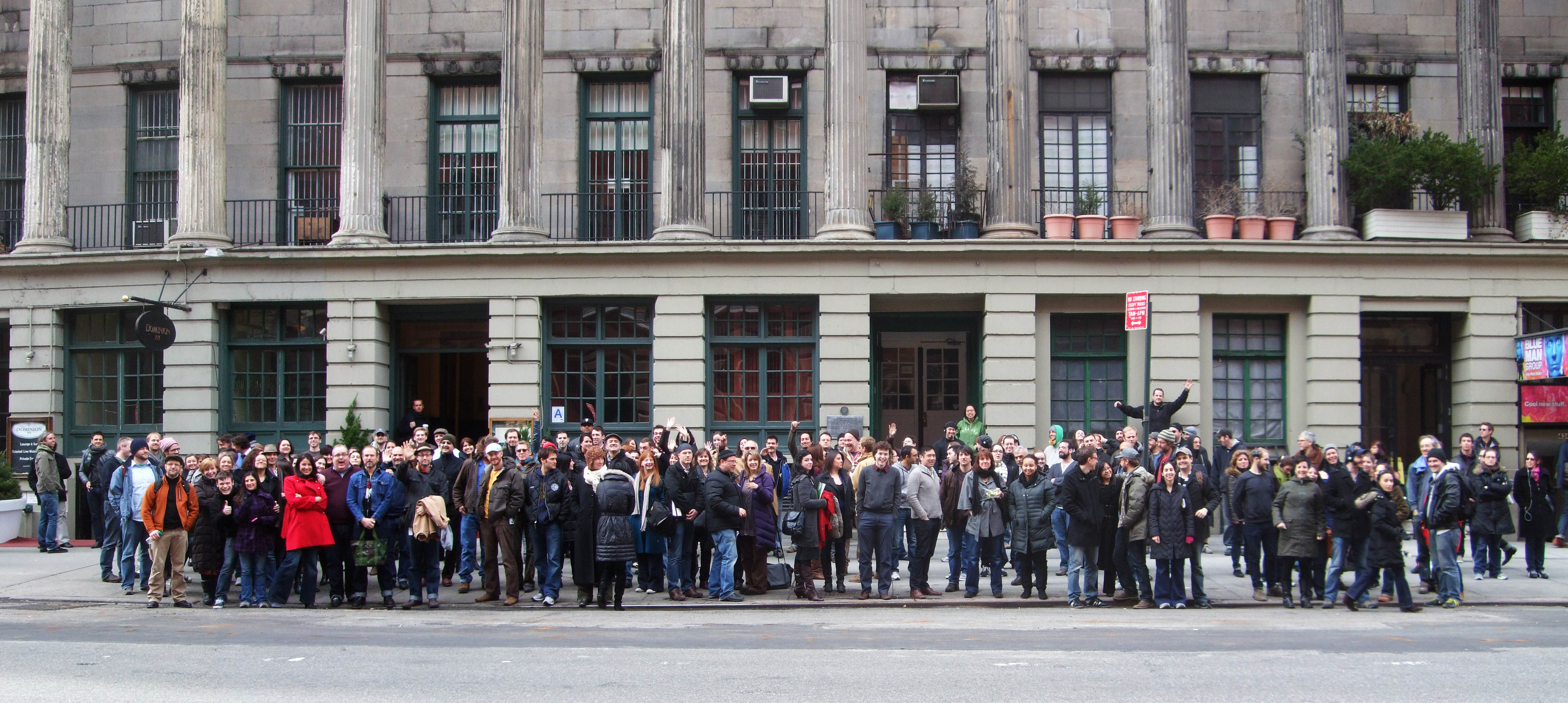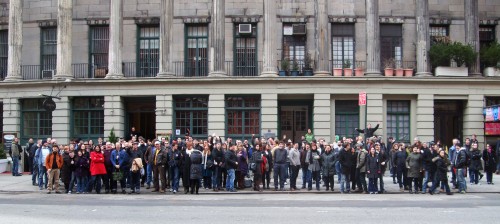On October 2, 2010, David Birrell was appearing in Stephen Sondheim’s Passion at the Donmar Warehouse in London. Â During a performance, one of the blank-firing guns used apparently had a problem, and Birell sustained an injury to his right eye. He may lose his sight in it. According to a spokeswoman for the theater, “It appears that during the duel scene in ‘Passion,’ David Birrell’s licensed replica stage gun misfired causing some debris to enter his eye.” Further sources claim it was actually an antique flintlock gun.
Accidents happen. Equipment malfunctions. Because blank-firing guns are so inherently dangerous, it is vital that even more attention is spent on following all the best practices of safety with them. I would go so far as to say that prop masters should not handle them: pyrotechnicians should handle the loading and handling of blank ammunition, experienced handlers should be in charge of selecting and maintaining the weapons, and skilled fight choreographs should block the scenes in which they are used. Of course, a prop master can also be a licensed pyrotechnician or be qualified to handle weapons (at the higher levels, many are); I am not saying being a prop master precludes one from using blank-firing guns, I am saying the title of “prop master” is not the sole prerequisite.
On April 15, 2010, Darrell D’Silva, an actor with the Royal Shakespeare Company was rehearsing a scene with a prop gun. He accidentally shot himself in the hand. It was during tech rehearsals for Antony and Cleopatra. He underwent surgery and returned to rehearsals with his arm in a sling. Apparently when it was handed to him, he thought it was unloaded. It took a big chunk off of his finger and blood spurted everywhere. Here is an incident where the accident came not from bad or malfunctioning equipment, but from bad communication. The actor was not told the gun was loaded, but more importantly, he disobeyed the cardinal rule of stage guns: treat every gun like it is a loaded weapon. An actor should never pull a trigger on a gun until the fight director commands him to.
November 15, 2008. Tucker Thayler, a 15 year old student at Desert Hills High School kills himself with a gun intended to be used as a sound effect for their production of Oklahoma. Apparently it was a real pistol with blanks. Apparently it was allowed as long as a parent was there to fire the gun. And I’m not sure how some schools still allow actual working firearms to be brought on campus. In most municipalities, you need a pyrotechnics license to fire blank ammunition for theatrical purposes; it is different than a standard gun license. After all, there are any number of firecracker and fireworks that average folk can use in their backyards legally in certain parts of the country, but once you want to fire them off inside a crowded theatre, the rules become much more stringent; the same is true of blank-firing guns.
Having a license means you have used blank ammunition before, the government trusts you to use blank ammunition in accordance with all safety standards and laws, and you are held liable for any accidents that may occur because of your negligence. If your area does not require licensing, you should still act as though it does and follow the same guidelines. Anyone handling or discharging blank ammunition should be familiar with it and know all the standard practices. Just because you can run out and buy it and “see what it does” does not mean that is in any way safe.
On March 31, 1993, Brandon Lee was filming a scene in The Crow. One of the thugs had a gun loaded with blanks to shoot at him. Because the blanks used were not correct and the gun was tampered with (stories are mixed), the gun had enough primer to push the cartridge out. Lee was hit in the abdomen and the bullet lodged in his spine. Several hours later, he died at the age of 28. A lot of the analysis of this tragedy points out that the thug should not have been aiming his gun directly at Lee. This goes back to the need for a qualified fight director; it’s not enough to know how to acquire and setup blank ammunition. Once also needs to know how to choreograph the scenes in a way to maximize safety.
On October 12, 1984, Jon-Eric Hexum was filming a scene in “Cover Up”, his first big role. He had a prop .44 Magnum loaded with blanks, and apparently was unaware that it could still expel paper wadding. Bored during a delayed scene, he began playing with his gun. It was loaded with 2 blanks and 3 empty cartridges. He held it to his head, quipped, “Let’s see if I’ve got one for me”, and pulled the trigger. The paper wadding hit hard enough to dislodge a quarter-size piece of his skull and push it into his brain. Six days later he was pronounced dead from the massive bleeding in his brain. This event is just screaming with its lack of safety protocols. Why was an actor left with a loaded pistol for such a long time when it was not needed? Why was he unaware that it was loaded, or that blank ammunition at point-blank range can be just as lethal? And whether it was loaded or not, he should not have pointed it at his head; he broke the cardinal rule where one treats every gun like it is a loaded weapon.
I, for one, find it absurd that one would want to put so many people in potential danger (by using blank-firing ammunition) for, essentially, a sound effect. I mean, do we drop stage weights from the grid to the stage where actors are because we like the sound it makes? Why is that ridiculous, but igniting gun powder is acceptable? Regardless of your beliefs, you will probably face the situation of dealing with blank-firing guns at some point in your career as a prop master. When one is faced with the situation of having to use them, all the appropriate safety precautions should be followed to the letter.


